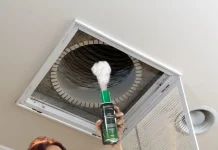Alright, let’s talk about something that might not sound super exciting at first, but trust me, it’s a game-changer for your home: insulation. You know how you always complain about the energy bills being too high? Or how your house feels like an oven in summer and a freezer in winter? Well, roof insulation and wall insulation sheets could be the answer to your problems.
Understanding Roof Insulation
What is Roof Insulation?
Roof insulation is like giving your house a nice, warm blanket. It’s a barrier that keeps the heat inside during winter and reflects it away during summer. Essentially, it helps maintain a comfortable temperature in your home, regardless of what’s happening outside.
Types of Roof Insulation
So, there are a few different types of roof insulation, each with its own perks.
Fiberglass: This is probably the most common type. It’s made of fine glass fibers and does a great job at trapping air, which slows down heat transfer.
Spray Foam: This is like the superhero of insulation. It expands to fill every nook and cranny, creating an airtight seal. Plus, it’s super effective at keeping out moisture.
Reflective Insulation: This one uses a reflective material to bounce heat away. It’s great for hot climates where you want to keep the heat out.
Benefits of Roof Insulation
Energy Efficiency
First off, roof insulation makes your home more energy-efficient. By keeping the heat in during winter and out during summer, your heating and cooling systems don’t have to work as hard. This means they use less energy, which is great for the environment and your wallet.
Cost Savings
Speaking of your wallet, roof insulation can lead to significant cost savings. Lower energy consumption means lower utility bills. Over time, the savings can more than pay for the initial investment in insulation.
Enhanced Comfort
And let’s not forget about comfort. With proper roof insulation, your home maintains a more consistent temperature. No more freezing in one room while another feels like a sauna.
Understanding Wall Insulation Sheets
What are Wall Insulation Sheets?
Wall insulation sheets are panels that fit snugly between your wall studs. They act as a barrier to heat flow, much like roof insulation. These sheets come in various materials, each offering different benefits.
Types of Wall Insulation Sheets
Rigid Foam: These sheets are made of foam plastics like polystyrene or polyurethane. They’re lightweight, easy to install, and provide excellent thermal resistance.
Mineral Wool: Made from rock or slag, mineral wool is fire-resistant and provides great sound insulation along with thermal benefits.
Cellulose: This is an eco-friendly option made from recycled paper products. It’s treated to be fire-resistant and offers good thermal performance.
Benefits of Wall Insulation Sheets
Improved Thermal Performance
Wall insulation sheets significantly improve your home’s thermal performance. They reduce heat transfer, helping keep your home warm in the winter and cool in the summer.
Noise Reduction
Another great benefit is noise reduction. Wall insulation sheets can dampen sounds from outside, making your home a quieter, more peaceful place.
Moisture Control
Proper insulation also helps control moisture levels. This can prevent issues like mold growth, which is good news for your health and your home’s structural integrity.
How Roof and Wall Insulation Work Together
Now, let’s talk about synergy. Roof and wall insulation work together to create a more energy-efficient home. The roof insulation tackles heat loss or gain through the top of the house, while wall insulation addresses it through the sides. Together, they form a comprehensive barrier against temperature fluctuations, reducing the load on your HVAC system and further lowering your energy bills.
Choosing the Right Insulation Materials
Factors to Consider
When choosing insulation materials, consider factors like R-value (a measure of thermal resistance), ease of installation, and cost. Also, think about your specific needs. Do you need something that provides sound insulation as well? What about fire resistance?
Environmental Impact
Eco-friendliness is another important factor. Materials like cellulose insulation are made from recycled products, making them a greener choice.
Cost vs. Benefits Analysis
Finally, do a cost vs. benefits analysis. Sometimes, spending a bit more upfront on higher-quality insulation can lead to greater savings down the line.
Installation Process of Roof Insulation
Preparation Steps
Before you start, make sure the roof area is clean and free of any debris. Measure the area to determine how much insulation you’ll need.
Installation Methods
For fiberglass, you’ll need to lay down the batts or rolls between the roof joists. With spray foam, it’s best to hire a professional as the process involves specialized equipment. Reflective insulation usually comes in sheets that you can staple to the roof rafters.
Safety Precautions
Always wear protective gear like gloves and a mask, especially when working with fiberglass, as the tiny glass fibers can be irritating.
Installation Process of Wall Insulation Sheets
Preparation Steps
Clear the wall area and measure the spaces between studs. Cut the insulation sheets to fit snugly in these spaces.
Installation Methods
Rigid foam and mineral wool can be cut to size and placed between the studs. For cellulose, you might need to blow it in, which again might require professional help.
Safety Precautions
Similar to roof insulation, wear protective gear. Also, ensure the workspace is well-ventilated, especially when cutting materials that can create dust.
Common Mistakes to Avoid During Installation
Incorrect Measurements
Always double-check your measurements. Cutting insulation too small can leave gaps, while cutting it too large can cause it to bunch up, reducing its effectiveness.
Skipping Safety Measures
Don’t skip on safety measures. The right protective gear can prevent irritation and long-term health issues.
Poor Sealing
Ensure all gaps and seams are properly sealed. Even small gaps can significantly reduce the effectiveness of your insulation.
Maintenance of Roof and Wall Insulation
Regular Inspections
Perform regular inspections to check for signs of damage or wear. Look for things like water damage, which can reduce insulation effectiveness.
Addressing Wear and Tear
If you notice any issues, address them promptly. Small repairs can prevent bigger problems down the line.
Professional Maintenance Tips
Consider having a professional inspect your insulation periodically. They can spot issues you might miss and suggest the best fixes.
Case Studies: Successful Energy Savings
Residential Examples
One family in Arizona saw their energy bills drop by 30% after installing roof and wall insulation. They also noted a significant improvement in indoor comfort.
Commercial Examples
A small business in Texas reduced their energy costs by 40% by investing in high-quality roof and wall insulation. This also improved their office environment, leading to higher employee satisfaction.
Cost Analysis: Roof Insulation vs. Wall Insulation Sheets
Initial Investment
Roof insulation typically has a higher initial cost, especially if you opt for spray foam. Wall insulation sheets can be more budget-friendly, depending on the material.
Long-term Savings
Both roof and wall insulation offer significant long-term savings. However, roof insulation tends to provide a quicker return on investment due to its higher impact on energy efficiency.
ROI Comparison
When comparing ROI, consider factors like your local climate, the current state of your insulation, and your energy usage patterns. In general, both types of insulation can pay for themselves within a few years.
FAQs About Roof and Wall Insulation
- What’s the best type of insulation for my roof?
- It depends on your needs and budget. Fiberglass is cost-effective, spray foam offers the best seal, and reflective insulation is great for hot climates.
- Can I install insulation myself?
- Yes, but some types (like spray foam) are best left to professionals. Always follow safety guidelines.
- How long does insulation last?
- Quality insulation can last 20-30 years, but regular maintenance is key to longevity.
- Is insulation environmentally friendly?
- Some types, like cellulose, are very eco-friendly. Always check the material’s environmental impact before purchasing.
- Will insulation reduce noise?
- Yes, both roof and wall insulation can help reduce noise, creating a quieter indoor environment.
Conclusion
So, there you have it! Insulating your roof and walls is a smart investment that pays off in multiple ways. From energy savings and cost reductions to improved comfort and noise reduction, the benefits are clear. Whether you’re building a new home or looking to upgrade your current one, don’t overlook the power of good insulation.






















![InstaPro APK Download Latest Version 2023 [Anti Ban]](https://olo.my.id/wp-content/uploads/2023/10/instapro-100x70.jpg)